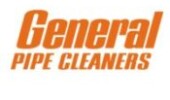
Preventive measure proves profitable
March 1, 2015 | By Rick Ensley
Using waterless floor drain traps to eliminate sewer odours and evaporation.
Sewer gas rising from floor drains might be an unhealthy nuisance for commercial building owners and homeowners, but for plumbing service contractors, it can produce aftermarket and service call add-on sales that can increase profits.
A common cause of sewer odours in floor drains is the evaporation of the gas-blocking water trap seal that prevents sewer gas egress through a floor drain P-trap. It is especially common with infrequently used drains. Once evaporated, the trap seal is broken, leaving nothing to stop the sewer gas from rising up into the occupant’s breathing zones.
Plumbing service contractors have four options to remedy this problem. The water-supplied trap seal primer consists of a vacuum breaker and works on a pressure differential concept. The drainage supply trap seal primer catches a more conservative quantity of waste water and directs it to the floor drain to keep it primed. The deep trap seal is longer, deeper and holds more water. The barrier-type, waterless floor drain trap seal protection device, which is the focus of this article, features a one-way membrane that acts similar to a check valve. The membrane is sensitive enough to open from the weight of just four ounces of water, but strong enough to stay closed and sealed to minimize evaporation and eliminate sewer gas odour.
The waterless floor drain seal does not require floor breakups or a water supply and needs no maintenance. Installers simply push-fit it into the drain pipe after removing the floor drain grate. A tapered rubber gasket around its circumference holds it tightly in place and also creates a tight, impenetrable seal between the device and the drain pipe interior. <>




